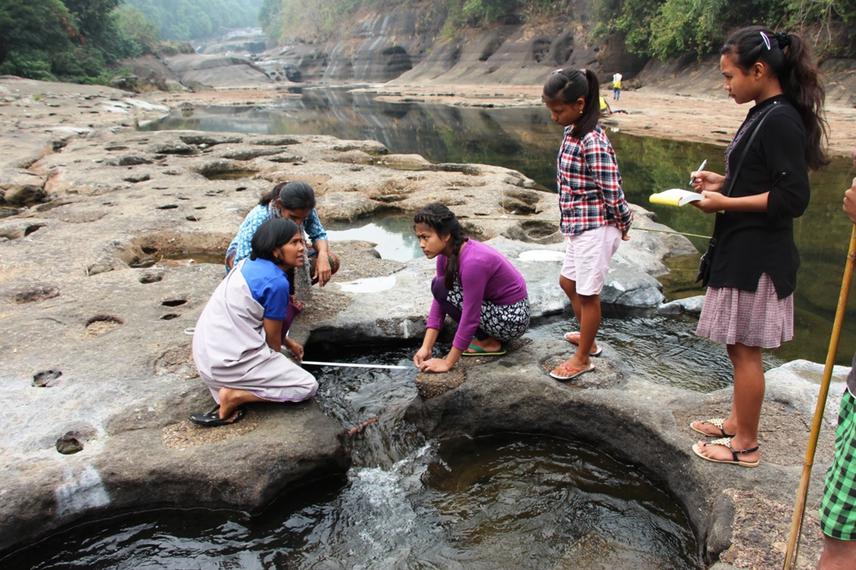Sonali Saha
Other projects
We propose to involve local communities to establish a water monitoring program of selected rivers in East Khasi Hills, Meghalaya, India. One year measurements of river depth/discharge and rainfall with fish abundance and diversity will be used to determine environmental flows of the selected river ecosystems of East Khasi Hills district.

We aim to establish a river monitoring program to document hydrological parameters (rainfall, water level and discharge) along with fish diversity and abundance in Rymben/Borhill river system of East Khasi Hills district, Meghalaya state. The data collected over one year will establish a baseline relationship linking hydrology (river flow, depth) with ecosystem structure and function, focusing on fish communities. This information can be used to document the seasonally varying flow regime necessary for maintaining diverse fish communities. Observations will also reveal the conservation status of fish species, and can then be used to set up catch and individual size limits. Local communities whose livelihoods and nutrition depend on the Rymben/Borhill river system will be sensitized to the benefits of monitoring; this will be done through meetings/workshops with the communities and local schools. This will build the capacity of local communities for active management of local rivers, interaction with government agencies and acting as sentinels for the
watershed.
Finally, the monitoring data on hydrological parameters and fish abundance will add to the data-poor but biodiversity-rich Northeastern India region that suffers from a lack of infrastructure and resources required to install and maintain monitoring stations across vast remote areas. The program will thus:
(i) develop monitoring skills and awareness among local communities, researchers and managers of flow-ecology relationships,
(ii) determine an initial set of environmental flow guidelines to better manage the river catchment, water use and fisheries,
(iii) empower local communities with tools and information that will allow them to make informed decisions on practices of freshwater resource utilization.
Therefore, by establishing a monitoring program on river water discharge, water depth and seasonal dynamics in conjunction with fish abundances the project will generate fundamental information required for making water abstraction decisions, in this data-deficient part of India. The project will explore setting up of low cost river monitoring program with the help of community involvement for conservation and sustainable water resource management which could be replicated in other parts of Indian northeast as well.